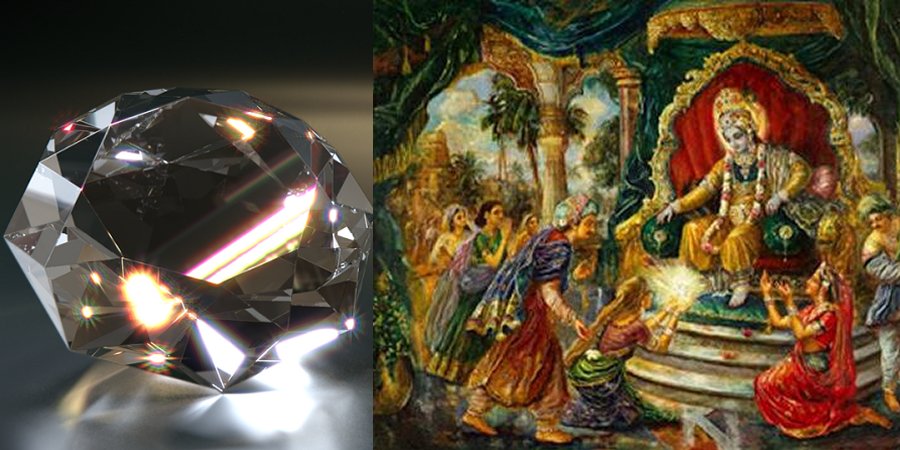Syamantaka – Divine Jewel With Magical Powers Was A Gift From The Sun God In Hindu Mythology
Ellen Lloyd - AncientPages.com - Whether it is a ring, necklace, cup, stone, or some other object, precious artifacts with supernatural abilities are often mentioned in myths and legends of our ancestors.
Syamantaka was a divine gem with magical abilities in Hindu mythology. Tradition has it that the land in possession of Syamantaka was protected from droughts, floods, earthquakes, and famines.
Left: Diamond. Credit: Public Domain - Right: Lord Krishna receives the Syamantaka. Credit: Jagannath Puri Hare Krishna Movement
This precious jewel could provide gold daily.
Syamantaka, The Most Famous Jewel In Hindu Mythology
Syamantaka, the most famous jewel in Hindu mythology, originally belonged to the Sun god, who wore it around his neck.
As the legend goes, Satrajit, a nobleman from Dwarka who was a great devotee of Surya, the Sun God, decided he would perform a rigorous penance to appease the Sun God. He left all his possessions and went to live in the forest, where he stayed for many years.
As Ahalya Gautam writes in the book Popular Upanishads Tales For All, one day, "the Sun god appeared before him and made him visit his abode. Finally, the happy Lord gave Satrajit his much renowned and fabled Syamantaka Mani (the gem). Satrajit wore that gem around his neck and returned to Dwarka. Owing to his wearing that gem, his whole personality dazzled like the sun."
An exciting part of the story concerns what the Sun God looked like after removing the jewel from his neck. According to the legend, the Sun God was shining so brightly that Satrajit couldn't see him. He asked the deity to appear in a less fiery shape. When the Sun God removed the Syamantaka jewel off his neck, Satrajit could see that his worship deity was not very tall. The Sun God had dwarfish stature, with a body like burnished copper, and his eyes very slightly reddish eyes.
With the precious jewel hanging around his neck, Satrajit returned to his palace. Now he was also shining brightly, and the guards mistook him for the Sun God.
They quickly notified Lord Krishna that the Sun God had taken his place in Dwarka. When Lord Krishna learned about this, he smiled and said: "He is not the Sun god but only our brethren Satrajit. His body is appearing so sparkling because he is wearing the fabled gem Syamantaka. The gem creates this impression around the wearer's personality."
Lord Krishna Accused Of Murder And Theft
Satrajit placed the precious jewel in his palace on a unique altar; each day, the stone produced plenty of gold.
Satrajit and Prasena with the Symantaka Mani, an Illustration to the Bhagavata Purana Credit: Public Domain
One day Lord Krishna told Satrajit that he should give the magical stone to the King of the Yadus, Ugrasena, but Satrajit refused. The magnificent Syamantaka turned Dwarka into a prosperous and peaceful kingdom free from diseases and distress.
Not long after this, Satrajit's brother Prasena went hunting, and he had the Syamantaka hanging on a chain around his neck. Prasena was killed by a lion that took the jewel to a cave in the mountains. The cave inhabitants were Jambavan, the King of the Bears, and one of the Chiranjeevi, the seven immortals in Hinduism who are to remain alive on Earth until the end of the current Kali Yuga.
Rumors spread, and it was believed that Lord Krishna had stolen the precious Syamantaka. Satrajit was worried that his brother had not returned, and he suspected Lord Krishna had murdered Prasena.
"Not only had Krishna also expressed the desire of possessing that gem. The recollection of that desire of Krishna convinced Satrajit that Krishna had murdered Prasena to possess that gem. When this rumor spread far and wide in Dwarika (Dwarka), people started looking at Krishna with a suspicious eye," Ahalya Gautam writes.
Lord Krishna was innocent, and the only way to prove this was to find the magical gem. He went to the forest, followed the trail of the deceased Prasena, found the man's body, and finally located the mountain cave where he saw the dead body of the lion. Lord Krishna noticed tracks of a bear inside the cave and followed them. Then, he saw how Jambavan's children were playing with the valuable jewel. Lord Krishna engaged in a furious battle with Jambavan, the King of the Bears.
When Lord Krishna did not return to Dwarka, his father Vasudeva was sorrowful, but the divine seer Narada offered comforting words to all the people of Dwarka.
"You should not weep as Krishna cannot be slain. However, to ensure his safety and welfare, they should also hymn the praises of Mother Ambika, who would surely bring him back safely," Narada said.
The battle between Lord Krishna and Jambavan lasted 28 days until the King of the Bears finally grew tired. Lord Krishna took the precious gem, returned it to Dwarka, and gave the stone to Satrajit, who accepted the jewel but with great shame and remorse.
Satrajit felt bad. He had accused Lord Krishna of murder and theft. So, he decided to offer Lord Krishna the jewel and his three daughters, Satyabhama, Vratini, and Prasvapini.
Lord Krishna accepted the hand of Satrajit's daughter, Satyabhama, but he had no interest in the jewel.
Not long after this, Lord Krishna left Dwarka and thieves used this opportunity to steal the precious gem. They broke into Satrajit's palace, killed him, and stole the Syamantaka. When Lord Krishna learned about this crime, he was furious. He traveled back to Dwaraka to avenge Satrajit's death.
Lord Krishna chased down Kritavarma, Akrura, and Satadhanwa, who were the thieves. Akrura, chief of the Yadavas, an ancient people of India, managed to escape with the jewel to Kashi.
Lord Krishna summoned Akrura and asked him to admit his guilt. When Akrura complied, Krishna let him keep Syamantaka on the condition that it would remain in the city of Dwaraka.
Was Syamantaka A Real Jewel?
Since the fate of Syamantaka is unknown, many have speculated whether the precious stone was more than just a mythological jewel. Dwarka was long considered a mythical place, but this changed when underwater archaeologists discovered the ancient ruins of Krishna's kingdom on the coast of Gujarat, just near the Pakistan border.
Could the Syamantaka still lie at the bottom of the ocean?
Some have suggested Syamantaka was the famous Koh-i-Noor diamond, known to have been owned by the Mughal emperors of India and, at present, is one of the Crown Jewels of England.
"It was only really in the early nineteenth century, when the Koh-i-Noor reached Punjab and the hands of Ranjit Singh, that the diamond began to achieve its pre-eminent fame and celebrity – so much so that by the end of Ranjit's reign, pious Hindus were beginning to wonder if the Koh-i-Noor was the legendary Syamantaka gem mentioned in the Bhagavad Purana's tales of Krishna," Anita Anand and William Dalrymple wrote in the book Koh-I-Noor: The History of the World's Most Infamous Diamond.
Whether Syamantaka was just a magnificent mythological artifact or a natural, precious jewel is still debated.
Updated on June 10, 2024
Written by Ellen Lloyd – AncientPages.com
Copyright © AncientPages.com All rights reserved. This material may not be published, broadcast, rewritten or redistributed in whole or part without the express written permission of AncientPages.com
Expand for referencesMore From Ancient Pages
-
 Exceptional Precision And Technical Mastery Of Iberian Archery From 7,000 Years Ago
Archaeology | Dec 27, 2024
Exceptional Precision And Technical Mastery Of Iberian Archery From 7,000 Years Ago
Archaeology | Dec 27, 2024 -
 Archaeological Site Along The Nile Reveals The Nubian Civilization That Flourished In Ancient Sudan
Civilizations | Apr 14, 2022
Archaeological Site Along The Nile Reveals The Nubian Civilization That Flourished In Ancient Sudan
Civilizations | Apr 14, 2022 -
 Mysterious Standing Deer Stones Of Mongolia -Their Purpose And Creators Remain Unknown
Ancient Mysteries | Jun 18, 2014
Mysterious Standing Deer Stones Of Mongolia -Their Purpose And Creators Remain Unknown
Ancient Mysteries | Jun 18, 2014 -
 Rare Bulla (Seal) And 2,600-Year-Old Stamp With Biblical Name Unearthed In City Of David
Archaeology | Apr 3, 2019
Rare Bulla (Seal) And 2,600-Year-Old Stamp With Biblical Name Unearthed In City Of David
Archaeology | Apr 3, 2019 -
 Why Did Archaeologists Destroy Medieval King’s Wharf After Excavations?
Archaeology | May 17, 2023
Why Did Archaeologists Destroy Medieval King’s Wharf After Excavations?
Archaeology | May 17, 2023 -
 Antediluvian Time-Capsule Hidden In Forbidden Ancient Egyptian Crypts?
Ancient Mysteries | May 7, 2018
Antediluvian Time-Capsule Hidden In Forbidden Ancient Egyptian Crypts?
Ancient Mysteries | May 7, 2018 -
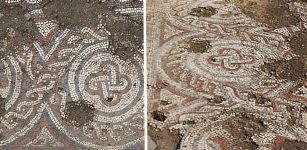 First 5th Century Mosaic Found Near Cirencester Once The Second-Largest Roman-British Town In England
Archaeology | Dec 16, 2020
First 5th Century Mosaic Found Near Cirencester Once The Second-Largest Roman-British Town In England
Archaeology | Dec 16, 2020 -
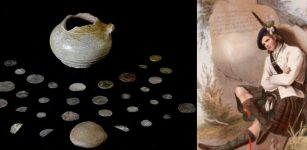 Coin Hoard Paints A Fascinating Picture Of Life Of Highland Clan Chief And His Household
Archaeology | Oct 13, 2023
Coin Hoard Paints A Fascinating Picture Of Life Of Highland Clan Chief And His Household
Archaeology | Oct 13, 2023 -
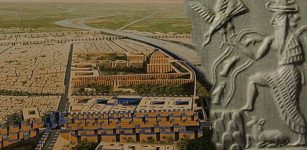 Eridu: Pre-Flood City That Belonged To Enki, God Of Creation, Intelligence, Wisdom And Magic
Civilizations | Mar 27, 2017
Eridu: Pre-Flood City That Belonged To Enki, God Of Creation, Intelligence, Wisdom And Magic
Civilizations | Mar 27, 2017 -
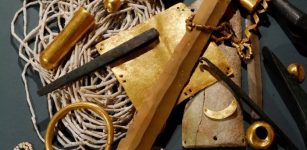 DNA Evidence For Early Contact Between Farmers And Pastoralists In Black Sea Region
Archaeology | Jul 20, 2023
DNA Evidence For Early Contact Between Farmers And Pastoralists In Black Sea Region
Archaeology | Jul 20, 2023 -
 Mysterious Ancient European Cloaked Individuals – Who Were These Perplexing Beings?
Featured Stories | Mar 15, 2025
Mysterious Ancient European Cloaked Individuals – Who Were These Perplexing Beings?
Featured Stories | Mar 15, 2025 -
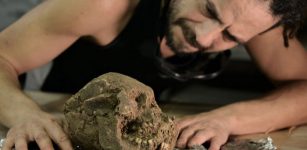 Lady SAS – Ancient Skeleton Of Foreign Woman Found In Palenque – Who Was She?
Archaeology | Apr 11, 2023
Lady SAS – Ancient Skeleton Of Foreign Woman Found In Palenque – Who Was She?
Archaeology | Apr 11, 2023 -
 William Marshal Earl Of Pembroke: Master Of Tournaments And Best Example Of Medieval Chivalry And Knighthood
Featured Stories | Jul 7, 2017
William Marshal Earl Of Pembroke: Master Of Tournaments And Best Example Of Medieval Chivalry And Knighthood
Featured Stories | Jul 7, 2017 -
 Tower Of The Winds And Daydreaming Of Andronicus Of Cyrrhus
Featured Stories | May 14, 2019
Tower Of The Winds And Daydreaming Of Andronicus Of Cyrrhus
Featured Stories | May 14, 2019 -
 Kuthodaw Pagoda – ‘The World’s Largest Book’ Carved In 729 Marble Slabs
Featured Stories | Feb 24, 2018
Kuthodaw Pagoda – ‘The World’s Largest Book’ Carved In 729 Marble Slabs
Featured Stories | Feb 24, 2018 -
 ‘Sophisticated’ 4,000-Year-Old Steppe Pyramid Discovered In Kazakhstan
Archaeology | Aug 12, 2023
‘Sophisticated’ 4,000-Year-Old Steppe Pyramid Discovered In Kazakhstan
Archaeology | Aug 12, 2023 -
 Ptolemaic Granite Sarcophagus Found In Alexandria, Egypt
Archaeology | Jul 6, 2018
Ptolemaic Granite Sarcophagus Found In Alexandria, Egypt
Archaeology | Jul 6, 2018 -
 Maat – Ancient Egypt’s Most Important Religious Concept
Egyptian Mythology | Apr 4, 2018
Maat – Ancient Egypt’s Most Important Religious Concept
Egyptian Mythology | Apr 4, 2018 -
 Quest For Atlantis Of The Sands – Iram Of The Pillars – A Legendary Lost City
Featured Stories | Aug 7, 2018
Quest For Atlantis Of The Sands – Iram Of The Pillars – A Legendary Lost City
Featured Stories | Aug 7, 2018 -
 Unexpected Discovery Of Europe’s Oldest Vanilla Pod In Prague Castle – Was It Used For Alchemical Experiments?
Archaeology | Apr 8, 2025
Unexpected Discovery Of Europe’s Oldest Vanilla Pod In Prague Castle – Was It Used For Alchemical Experiments?
Archaeology | Apr 8, 2025

